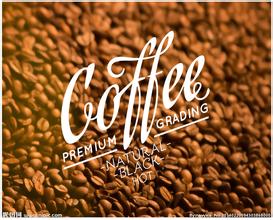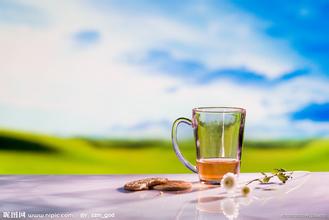Coffee roasting knowledge of professional coffee roasting method introduction coffee roaster
The roasting method of professional coffee is usually divided into the following eight stages.
1. Very shallow baking (LIGHTRoast):
The degree of baking; very shallow baking, also known as shallow baking.
The lightest roasting degree of all roasting stages, the surface of the coffee beans is a light cinnamon color, its taste and aroma are insufficient, this state is almost undrinkable. It is generally used for testing and seldom for tasting.
2. Shallow baking (CINNAMONRoast):
Degree of baking; shallow baking, also known as cinnamon baking.
The general baking degree, showing cinnamon color on the appearance, the smell of green has been removed, the aroma is OK, and the acidity is strong, which is a common roasting degree of American coffee.
3. Micro baking (MEDIUMRoast):
Baking degree; moderate baking, also known as micro baking.
Medium baking heat and light baking are both American, in addition to sour taste, bitterness also appears, the taste is good. It has moderate aroma, acidity and mellowness, and is often used in the baking of mixed coffee.
4. Medium baking (HIGHRoast):
Baking degree; moderate micro-deep baking, also known as concentration baking.
Belongs to the moderate micro-deep baking, the baking degree is slightly stronger than the slight medium baking, the surface has appeared a little thick brown, the bitterness also becomes stronger. Coffee tastes sour and bitter, with good aroma and flavor, and is most often loved by people in Japan and Central Europe. (blue Mountain Coffee)
5. Medium and deep baking (CITYRoast):
Baking degree; medium-deep baking, also known as urban baking.
The most standard degree of roasting, bitterness and acidity are balanced and are often used in French coffee. (Brazil, Colombia)
6. Deep baking (FULL-CITYRoast):
Baking degree; micro-depth baking, also known as deep city baking.
The baking degree is slightly stronger than the medium depth, the color becomes quite dark, and the bitter taste is stronger than the sour taste. It belongs to the Central and South American baking method, which is very suitable for preparing all kinds of iced coffee.
7. Very Deep Baking (FrenchRoast):
Degree of baking; deep baking, also known as French baking.
Also known as French or European baking, belongs to deep baking, the color is thick brown with black, sour taste can not be felt, especially in Europe, France is the most popular, because the fat has infiltrated to the surface, with a unique flavor, very suitable for coffee Oulei, Viennese coffee.
8. Very Deep Baking (ItalianRoast):
Degree of baking; very deep baking, also known as Italian baking.
Also known as Italian baking, baking degree before carbonization, there is a scorched taste, mainly popular in Latin countries, suitable for fast coffee and cappuccino. Most of them are used in Espresso coffee series.
Coffee roasting
Baking depth meter
Baking depth appearance baking stage (the following temperature data are for reference only because of the different positions of temperature control points in different roasters)
Very shallow baking LIGHT
Light brown
Before and after the first explosion, 195 to 205 degrees
Shallow baking CINNAMON
Yellowish brown
The first explosion is over, about 205 degrees.
Medium baking / micro baking MEDIUM
Brown
About 205 to 215 degrees
Medium and deep baking / city baking, CITY
Reddish brown
About 215 to 225 degrees
City-wide baking, FULLCITY
Dark brown * dotted oil
About 225 degrees 230 degrees before the start of the second explosion
French baked French
Dark brown * oily on the surface
About 230 to 235 degrees
Italian baking is deep baking, Italian
ESPRESSO baking
Close to the black surface and greasy
Above 240 degrees

Important Notice :
前街咖啡 FrontStreet Coffee has moved to new addredd:
FrontStreet Coffee Address: 315,Donghua East Road,GuangZhou
Tel:020 38364473
- Prev

The planting and cultivation of Coffee Tree Seedling which country has the best coffee planting area?
Coffee fruit contains two seeds, namely coffee beans. The two beans are connected face to face with each other on one side of the plane. Each coffee bean has a thin outer film, which is called silver skin, and its outer layer is covered with a yellow outer skin, called endocarp. The whole coffee bean is wrapped in a sticky pulp to form coffee pulp, which is soft and sweet.
- Next

Introduction to coffee planting technology-how to grow coffee trees
Field management of loosening soil and weeding: when the seedling height is 3cm to 6cm, the weak or overdense seedlings are pulled out; when the seedling height is 10cm and 13cm, the plant distance is about 30cm. Soil loosening and weeding were carried out at the same time between seedlings and fixed seedlings to keep the soil loose. Coffee beans are more drought-tolerant, and the soil can grow normally when the soil moisture is maintained. During the drought, the coffee beans should be properly watered, but there should be less squatting seedlings during the seedling fixing period.
Related
- Beginners will see the "Coffee pull flower" guide!
- What is the difference between ice blog purified milk and ordinary milk coffee?
- Why is the Philippines the largest producer of crops in Liberia?
- For coffee extraction, should the fine powder be retained?
- How does extracted espresso fill pressed powder? How much strength does it take to press the powder?
- How to make jasmine cold extract coffee? Is the jasmine + latte good?
- Will this little toy really make the coffee taste better? How does Lily Drip affect coffee extraction?
- Will the action of slapping the filter cup also affect coffee extraction?
- What's the difference between powder-to-water ratio and powder-to-liquid ratio?
- What is the Ethiopian local species? What does it have to do with Heirloom native species?

